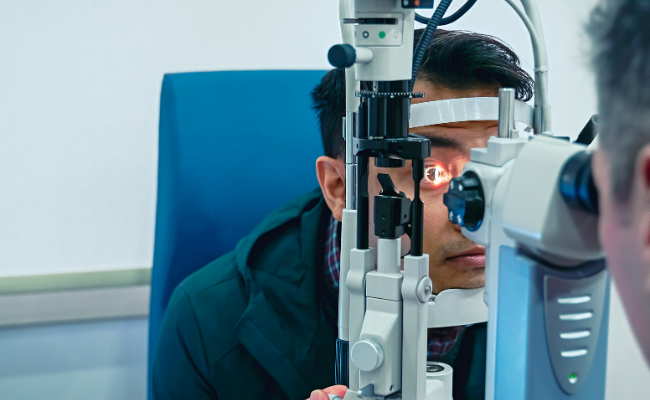Near-sighted? Smart Glasses on the Horizon Offer Hope
In an era of continuous technological advancements, near-sighted individuals may soon find a reason to rejoice. Breakthroughs in smart glasses that can reduce sight loss are emerging as a promising solution.
Scientists have developed a new set of lenses against nearsightedness or myopia. It is an eye condition where far objects look blurry.
The scientists design smart glasses to compare the light-focused attributes of special eyeglasses lenses intricately. Once fully developed, this major breakthrough will pave the way for more treatment options.
Myopia is becoming prevalent nowadays. In the US, almost 41.6% of the population are nearsighted individuals. This is a significant increase from 25% in 1971.
What Causes Myopia?
 This eye condition happens when the eyeballs grow longer. It becomes an oval-shaped instead of a standard round shape.
This eye condition happens when the eyeballs grow longer. It becomes an oval-shaped instead of a standard round shape.
Due to the irregularity in the eyeballs’ shape, it changes the way the light hits the retina. These eye cells are sensitive to the light at the back of the eye. Retina sends the visuals we see to the brain.
Moreover, the elongated eyeball prompts light to focus in front of the retina. It means that near objects are clear while distant objects are blurry.
You may also like: Latest research predicts Earth’s population peak
It is still unclear how myopia occurs. Some of the culprits may be genes and environmental factors, considering the increase in cases these past years.
One suspected cause is a little time spent outdoors. Considering the modern era, with almost everybody always locked on their phones and gadgets, natural outdoor lights may prevent the development of myopia.
These bright lights outside trigger the release of dopamine from the retina. It is a chemical that may stop eye lengthening. It could be a concern as most people nowadays prefer to stay indoors and focus on their phones or read for extended periods.
Slowing or totally stopping myopia has been under the lenses of researchers. Glasses and special contact lenses could help, but they’re unsuitable for all, especially children.
What are the latest advancements in smart glasses for nearsighted individuals?

He further posed that these advancements could benefit millions of children. Dr.Augusto also added these are vital to understanding how these lenses function.
The number of near-sighted individuals is increasing worldwide, especially among kids. A Victoria Advocate report says that half of the global population will be nearsighted by 2050 if the trend won’t stop.
Furthermore, specialized lenses show potential solutions to keep this from happening. It is significant for teens and children who experience progression in near-sightedness as they grow old.
The process that Optic describes measures lens performance under real-life viewing. It also observes the light-focusing characteristics of different lenses that can potentially slow down Myopia’s development.
These lenses that classify retinal signals are clinically tested. Scientists believe they can slow the eyeball’s growth, thus preventing it from becoming elongated.
These lenses use different types of mechanisms, like micro diffusers of microlenses. These manage the image properties of the retina while correcting the central vision.
You may also like: New AI Technology Uses Vital Signs to Predict If a Date Will ‘Smash or Pass’
The lead author said, “Therefore, we developed a new instrument that can measure the lens’s optical response to different illumination angles while reproducing the myopic eye’s pupil and refractive errors.”
The device incorporates an illumination source attached to an arm that rotates on the surrounding lenses. After the light passes through them, a rotating mirror prompts it to a spatial light modulator (SLM).
It comprises small liquid crystal cells that adjust the light with high spatial resolution. Through this observation, the researchers could recreate factual distortions produced by various illumination angles for specific types of myopic eyes.
The scientists characterized the lenses using single-wavelength light to clarify the findings of the image properties. Furthermore, the researchers are working on using the device and including sources with different wavelengths.

